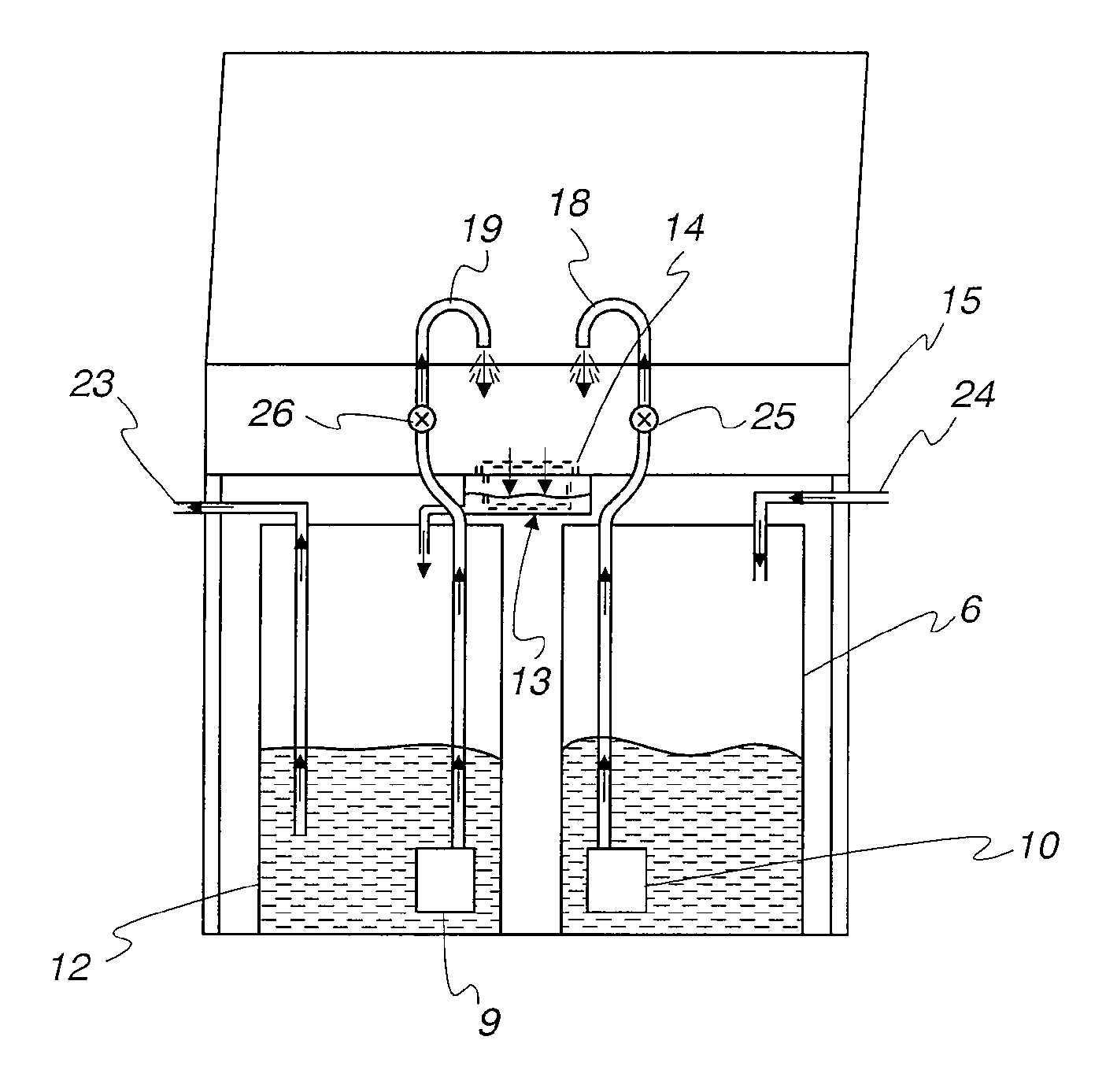Parts washer
a technology of parts and washers, applied in the direction of cleaning with liquids, separation processes, chemistry apparatuses and processes, etc., can solve the problem of using solvents to dirty the clean
- Summary
- Abstract
- Description
- Claims
- Application Information
AI Technical Summary
Benefits of technology
Problems solved by technology
Method used
Image
Examples
Embodiment Construction
[0053]Referring to FIG. 3, the parts washer comprises a sink 15, which is provided with primary and secondary filter drains 14 and 13. For the purpose of cleaning parts placed in the sink, clean solvent is introduced through a spout 18 and used solvent is introduced through a spout 19. Clean solvent is pumped to spout 18 from a clean solvent supply drum 6 by means of a pump 10. Used solvent is pumped to spout 19 from a used solvent supply drum 12 by means of a pump 9. Contaminated solvent exits sink 15 through primary and secondary filter drains 14 and 13 and drains into drum 12. Contaminated solvent passes from drum 12 to an inlet 23 of a solvent recycler (which may be in the form of a “black box” which is separate from the parts washer) and clean solvent passes from an outlet 24 of the recycler to drum 6. The individual flows of clean and used solvent from drums 6 and 12 through the spouts 19 and 18 may be regulated by means of manually operated flow controllers 25 and 26 (hereina...
PUM
 Login to View More
Login to View More Abstract
Description
Claims
Application Information
 Login to View More
Login to View More - R&D Engineer
- R&D Manager
- IP Professional
- Industry Leading Data Capabilities
- Powerful AI technology
- Patent DNA Extraction
Browse by: Latest US Patents, China's latest patents, Technical Efficacy Thesaurus, Application Domain, Technology Topic, Popular Technical Reports.
© 2024 PatSnap. All rights reserved.Legal|Privacy policy|Modern Slavery Act Transparency Statement|Sitemap|About US| Contact US: help@patsnap.com










